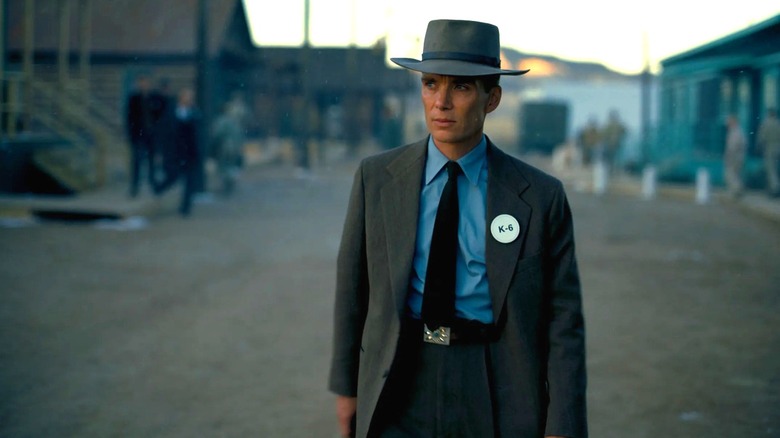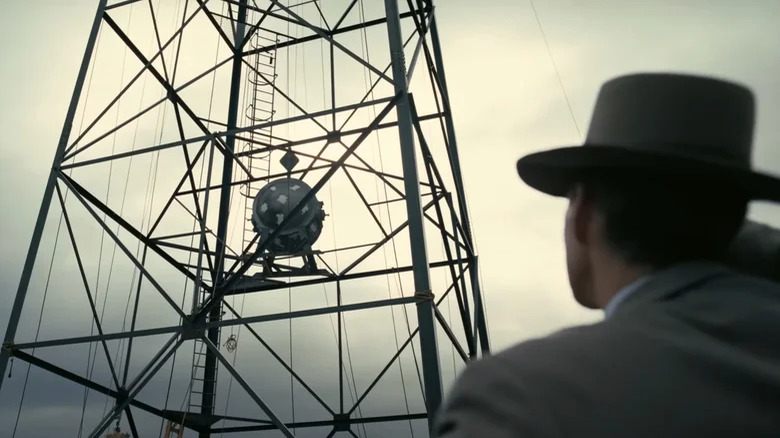The Deadly Effects Of The Trinity Test That Oppenheimer Didn't Show
Christopher Nolan's "Oppenheimer" just might be the biggest surprise of 2023, a tremendous box office success that tells the crowd-pleasing, four-quadrant story of ... J. Robert Oppenheimer's work on the atomic bomb.
In his review for /Film, Chris Evangelista called the film "a conflicting movie with an unknowable core. It's also one of the best movies of the year." Nolan's best movie, "Oppenheimer" unites virtually every white male actor in Hollywood for a film with endless talk about physics and math that still manages to be thrilling.
Nolan's crowning achievement is condensing the gargantuan 700-page biography "American Prometheus: The Triumph and Tragedy of J. Robert Oppenheimer" into a functional screenplay, but that meant cutting some things. This made the film a target for audiences disappointed that the film undermined the point of view of those who were wronged, attacked, harmed, and/or killed by Oppenheimer's work, like the people of Hiroshima and Nagasaki, and the victims of radiation from the Trinity test in New Mexico.
Tina Cordova, the co-founder of the Tularosa Basin Downwinders Consortium, wrote in The New York Times about how the film does a disservice to the inhabitants of the area where the Trinity test occurred. In the film, Oppenheimer says the entire area where the Los Alamos town was built was uninhabited, but that is inaccurate. In reality, more than 13,000 New Mexicans lived within a 50-mile radius of the test side, with many of those people were not warned about the test in advance.
"Eyewitnesses have told me they believed they were experiencing the end of the world," Cordova wrote, and many "simply dropped to their knees and recited the Hail Mary in Spanish" before being slowly poisoned with radiation that has resulted in generations of people getting cancer since 1945.
For the love of craft
Nolan's "Oppenheimer" omits many things from the Manhattan Project and its deadly effects, but it is a deliberate creative choice to omit those things. Is it a failure on Nolan's part not to at least have someone mention that the Los Alamos area was not uninhabited? Perhaps, but it served a purpose.
Nolan is not arguing that those things didn't happen or that they did not matter, but that Oppenheimer himself was single-mindedly focused on getting the job done – focused on the scientific achievement of creating an atomic reaction, of doing something that had never been done before, and also of creating the bomb before Hitler did, as he fears throughout most of the film.
If anything, Oppenheimer has the most in common with a similar film about a highly controversial figure that focuses on craft over the deadly aspects of history: Hayao Miyazaki's "The Wind Rises." The Studio Ghibli co-founder's last film before retiring (before he then un-retired) tells the story of Jiro Horikoshi and his work designing the Mitsubishi 15M and the A6M Zero fighters, which Japan used during World War II to deliver incredible destruction and tragedy of their own.
Like "Oppenheimer," the film mostly ignores the war aspect to focus on Horikoshi's sheer love of engineering and his dreams of designing beautiful aircraft. The war and the violent use of Horikoshi's work looms over the entire film, even if the film doesn't strictly show it, similar to the way that "Oppenheimer" technically includes footage of the bombings in Japan, but chooses to frame it so we only see Oppenheimer react to it.

